Best Beaches for Surfing in Cornwall
Whether you’re just starting out or already carving waves like a pro, discovering the best Cornish surfing beaches is a...
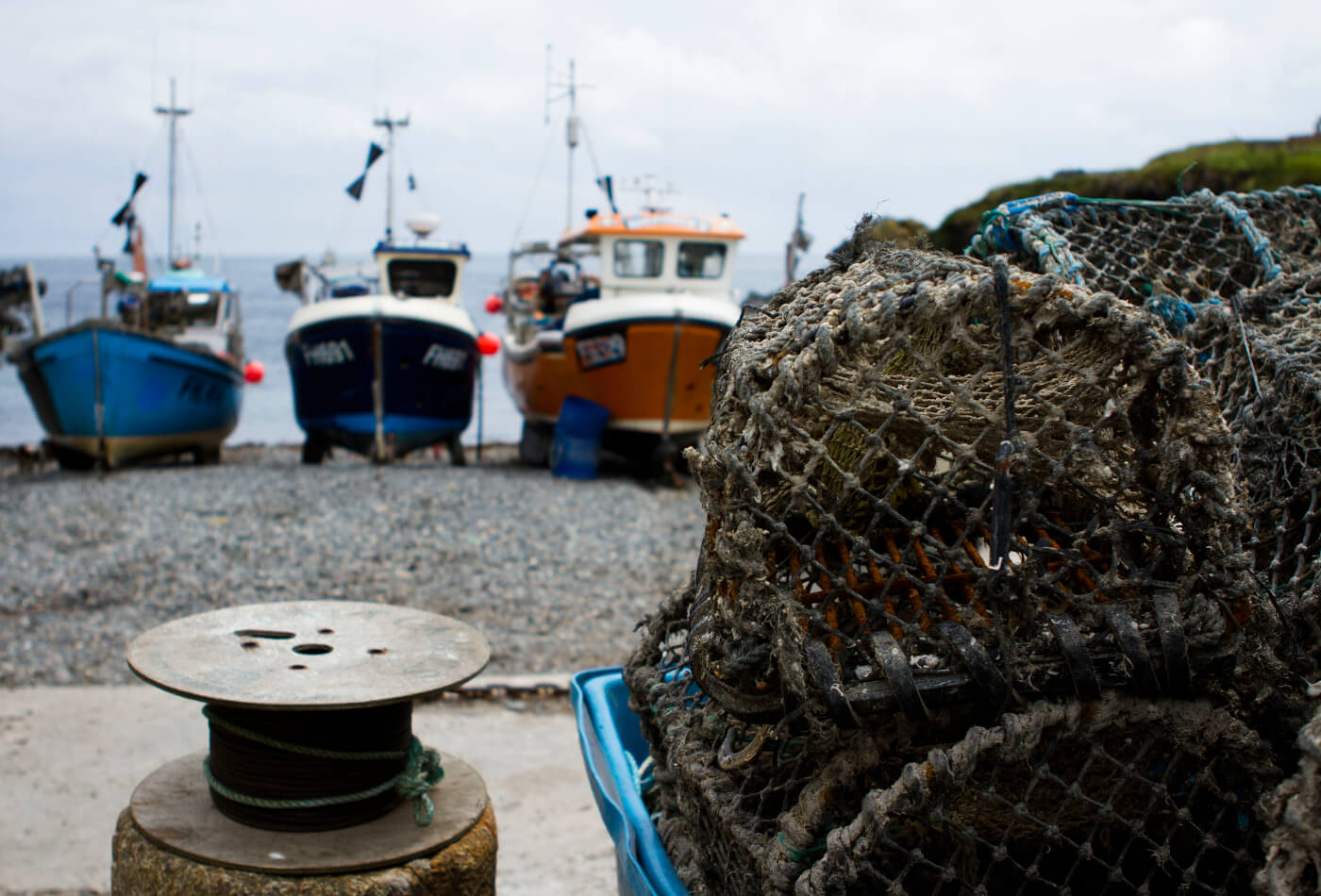
Fishing has played a hugely important role in Cornish life for hundreds of years, both in terms of physical survival and in providing jobs and income to the economy and inhabitants. In the 18th and 19th century pilchard fishing was one of the main industries in Cornwall. It was labour intensive work and involved several boats trailing pilchard seines (nets) which were gradually tightened and then pulled in to shore, where men, women and children would then store or process the pilchards for exporting. Many of Cornwall’s fishing villages grew outwards from these ports and harbours, showing the importance and prosperity that fishing provided the community.
The scale of the fishing industry in Cornwall has declined in the last hundred years but there are still small fleets of fishermen who live and work in these villages. The type of fishing has also diversified: lobster, crab and scallops are now commonly caught as well as mackerel, herring and pilchards, now rebranded as Cornish sardines. Some of what is caught is exported to the continent but a lot still ends up for sale in the local fish markets. Many of the pubs and restaurants in these regions will have the daily catch on the menu for you to sample!
A great number of these Cornish fishing villages have retained their traditional appearance and charm and you could be forgiven for thinking you have stepped back in time when you visit. Beautiful stretches of coastline hug the seashore, old whitewashed stone and thatched cottages line the streets and colourful fishing boats bob about in the harbour.
Read on to discover some of the prettiest and most idyllic coastal fishing villages to visit in Cornwall.
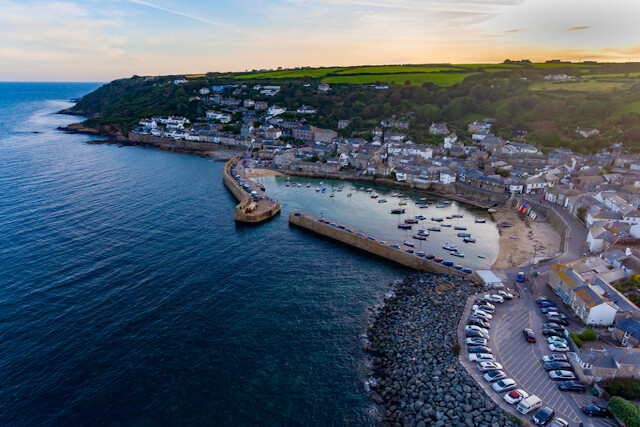
Located 3 miles down the coast from Penzance, Mousehole used to be a bustling port with a thriving fishing industry. Not much commercial fishing takes place these days but you will still find small fishing boats anchored in the harbour. Described by Dylan Thomas as “the loveliest village in England”, not much in Mousehole has changed. The village is still just as beautiful today, with its old stone harbour, Lamorna granite houses and the additions of quaint galleries and gift shops.
The village can lay claim to creating Stargazy Pie, a Cornish dish containing baked pilchards, eggs and potatoes that is covered with pastry but with the fish heads sticking out of the pie. It is traditionally eaten on the 23rd December during the festival of Tom Bewcock’s Eve. According to legend Tom Bewcock was a local fisherman who braved terrible storms during winter in order to catch enough fish to feed the village who were facing starvation. Today the festival coincides with the Mousehole Christmas illuminations, a spectacular display that lights up the village, hillside and harbour.
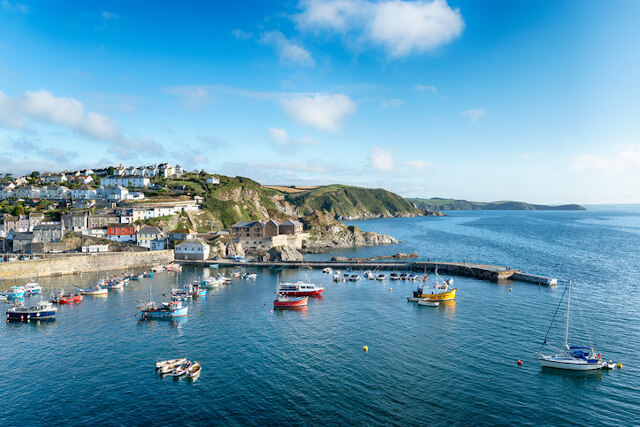
This pretty village is situated in Mevagissey Bay and is protected from the sea by the solid inner and outer harbour walls. The village spreads out from the harbour with attractive houses and buildings rising up the steep hillsides. There is plenty to see and do here; Mevagissey has a number of shops, pubs and restaurants as well as being home to a model railway museum, aquarium and close to the Lost Gardens of Heligan.
Mevagissey was once at the centre of Cornwall’s pilchard fishing industry and although no longer operating at the same scale, this is still a busy working harbour. Fishing vessels head out daily and a number of these boats run fishing charters and tours, giving you the opportunity to catch your own mackerel, cod, bream or even barracuda or tuna. There is also a daily ferry that runs to the nearby town of Fowey.
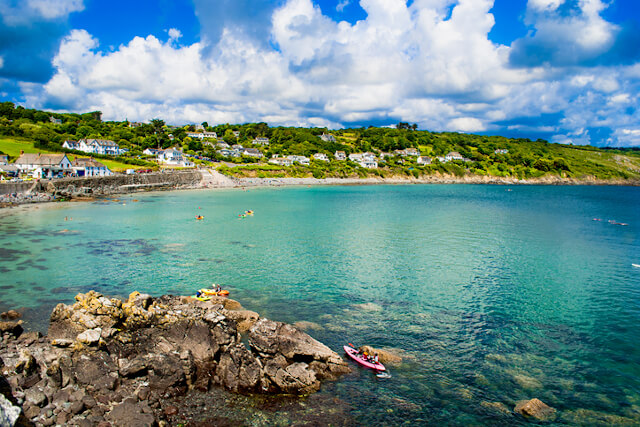
Coverack is a picturesque coastal village set within a sheltered bay on the east coast of the Lizard Peninsula. The coastline just out into the sea but the village is protected by the curved harbour which was constructed almost 300 years ago. The Peninsula is famous for its stunning scenery and the area around Coverack is especially beautiful. Wild flowers grow on the cliffs overlooking the cove and turquoise waters lap against golden sandy beaches. Stroll through the village and explore the quaint thatched cottages and cafes and pubs. There aren’t many attractions here but that only broadens its appeal to anyone looking to escape the hustle and bustle and enjoy some peace and quiet.
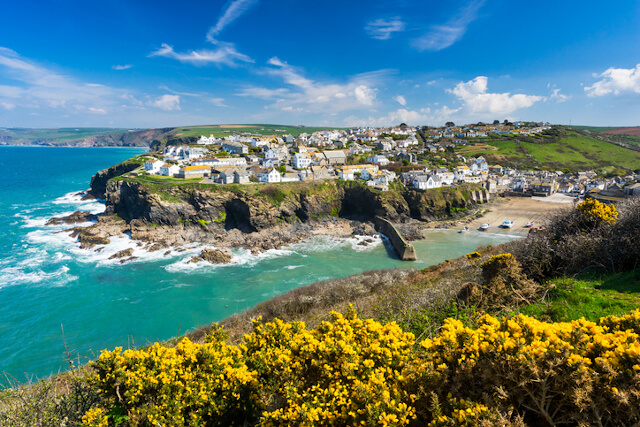
Port Isaac will be instantly recognisable to fans of TV’s Doc Martin as the fictional village of Portwenn, as well as being used as one of the main locations in the filming of Poldark. Narrows roads lined with stone and thatched cottages lead down from the cliffs to the harbour, where fishing still plays an important role in village life. There are regular fishing and sightseeing trips that allow you to explore more of this beautiful area and enjoy the views of Port Isaac from a different perspective. Some of the buildings in the village date back to the 14th century and it still retains much of its original charm and character. You certainly won’t go hungry if you visit – there are several pubs and restaurants all serving fantastic food and drink. Keep an eye out for the fresh fish on the menu!
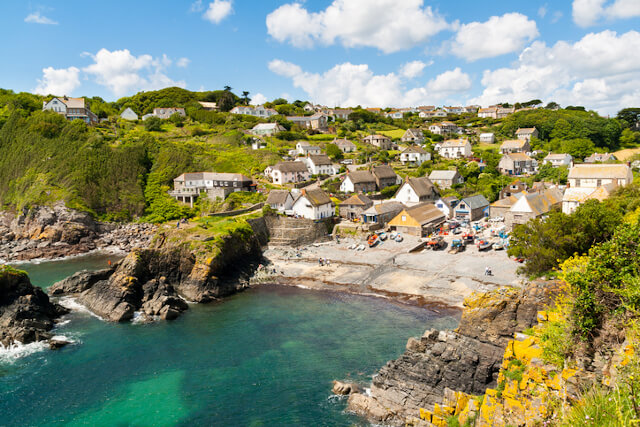
Cadgwith is a traditional coastal village with many remnants remaining of its fishing past. Dotted around the village and harbour are old pilchards cellars, winches and a former lifeboat house that used to patrol this area. Fishing here, however, is still very much a way of life and fishermen drag their boats down the slip and beach everyday to fish for crab, lobster and mackerel. All of these delights and more can be sampled in the local pubs and restaurants that form the hub of the community. It’s not unusual for live music and sea shanties to be struck up and sung long into the night.
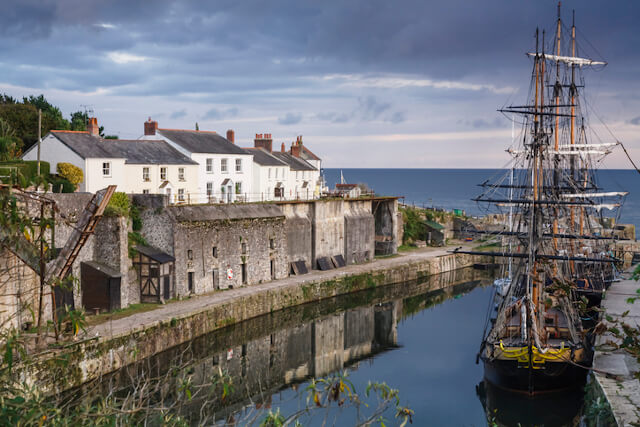
Located close to St Austell, Charlestown is renowned for its Georgian Grade II listed harbour and fleet of tall ships that are often docked in it. This used to be a thriving port, used first in the export of tin and copper and then China clay, when it began to be mined in the surrounding area. The village retains lots of its original Georgian features and has become a popular filming location, used for TV dramas such as Poldark, Hornblower and the Onedin Line. Fans of maritime history can spend all day at the Shipwreck, Rescue and Heritage Centre uncovering the stories behind thousands of artefacts from shipwrecks. Other nearby attractions include St Austell Brewery, the Eden Project and Pinetum Gardens.
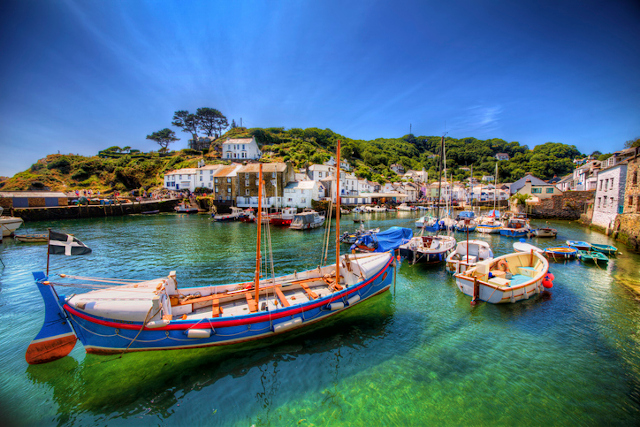
Located just south of Looe, Polperro is an idyllic village that has remained unspoiled through the ages. The streets in the village are so small that no vehicles are allowed in – just like it was hundreds of years ago. This stretch of coastline is stunningly pretty with a soft, sandy beach tucked away and sheltered behind the harbour wall.
Pilchard fishing was the main industry for many in the village but smuggling was also rife in the 18th and 19th century. Explore the history of both enterprises at the Polperro Heritage Museum of Smuggling and Fishing. Whilst smuggling no longer takes place (to my knowledge!), fishing is still a daily part of life; this stretch of water is a good spot for catching pollock and mackerel. There are also ferry boats that run between Fowey, Looe and Charlestown.
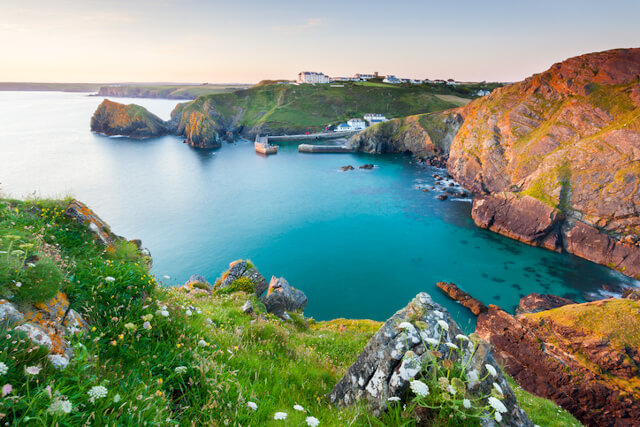
Situated in an Area of Outstanding Natural Beauty, Mullion is the largest village on the Lizard Peninsula. This stretch of coastline has rugged cliffs, hidden coves, soft white beaches and spectacular scenery. Whitewashed cottages sit nestled on the hillside and the village has plenty of amenities and attractions: pubs, restaurants, art galleries and traditional tea rooms. It’s also home to one of the best golf courses in Cornwall, Mullion Golf Club. Definitely worth a visit for keen golfers.
Like many of the other villages mentioned, Mullion had a thriving pilchard fishing industry in the 1800’s and early 1900’s. The boats would set out from Mullion Cove and return in the evening to the picturesque harbour, where they would be sheltered from the weather by the strong sea walls. It still has a working harbour, although the number of fishing vessels is now reduced. If you want to explore the waters or try your hand at fishing there are boats which provide excursions.
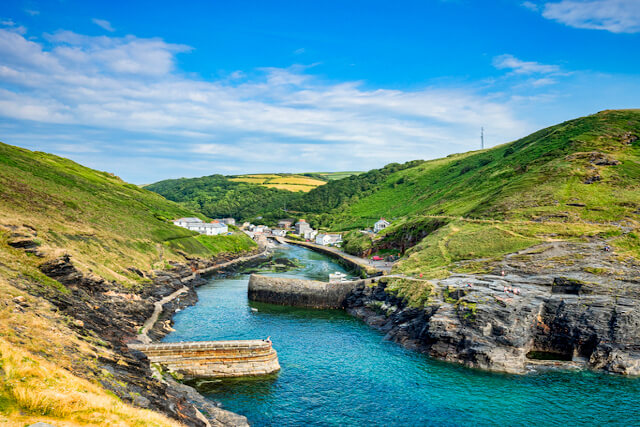
Set within a narrow valley this small fishing village is situated in a stunning Area of Outstanding Natural Beauty. The medieval harbour sits within a natural inlet and is protected by two stone walls built over 400 years ago. It was the only significant port in the area for miles and a number of goods, as well as fish, were transported through here. Today it is a sleepy, tranquil village with traditional thatched cottages, pubs, art galleries and potteries. Enjoy fabulous walks along the South West Coast Path or visit the Museum of Witchcraft, home to the world’s largest collection of items and artefacts relating to witchcraft and folklore. You’ll still find many fishing boats in the harbour and some of them run wildlife watching excursions to Long Island as well as fishing expeditions.
Feeling inspired to head to the Cornish coast? If you’d like to stay at a holiday cottage in one of these beautiful locations then follow the links to the location pages above or browse a full selection of coastal cottages in Cornwall.